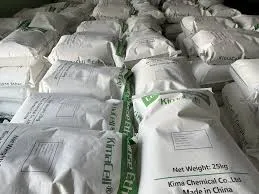
des. . 04, 2024 06:21 Back to list
Trends and Insights in the HPMC Market for 2023 and Beyond
The HPMC Market Trends, Applications, and Future Prospects
Hydroxypropyl Methylcellulose (HPMC) has emerged as a vital polymer widely utilized in various industries, including pharmaceuticals, food, construction, and personal care. The HPMC market has been witnessing significant growth driven by increasing demand for high-quality cellulose derivatives, which are favored for their excellent properties such as thickening, emulsifying, and film-forming capabilities. This article explores the trends, applications, and future prospects of the HPMC market, shedding light on its pivotal role in modern manufacturing and consumer products.
Market Overview
The global HPMC market has expanded rapidly in recent years, with a projected compound annual growth rate (CAGR) of around 6-8% over the next decade. This growth is largely attributed to the escalating demand for HPMC in the pharmaceutical industry, particularly in the formulation of controlled-release drug delivery systems. HPMC's biocompatibility and non-toxic nature make it an ideal ingredient for various pharmaceutical applications, enhancing the overall bioavailability of medications.
In addition to pharmaceuticals, the food and beverage sector is increasingly adopting HPMC as a food additive for its functional properties. It acts as a thickener, stabilizer, and emulsifier, crucial for maintaining texture and consistency in various food products. As health-conscious consumers drive the demand for clean-label products, HPMC's natural origin and compatibility with plant-based diets have made it a preferred choice in food formulations.
Key Applications of HPMC
1. Pharmaceuticals HPMC is extensively used in pharmaceutical formulations as a film-forming agent, excipient, and viscosity modifier. It plays a critical role in extended-release tablets and is commonly found in eye drops and other topical preparations. The ability of HPMC to control the release rate of active pharmaceutical ingredients (APIs) improves patient adherence and therapeutic efficacy.
2. Construction The construction sector benefits from HPMC's excellent water retention and workability properties. It is commonly added to cement, tile adhesives, and gypsum-based products to improve their performance. HPMC enhances binding properties and ensures optimal consistency, which is crucial in constructing durable and long-lasting structures.
hpmc market

3. Food and Beverage In the food industry, HPMC serves as a thickening agent and stabilizer. It is commonly used in sauces, soups, ice creams, and baked goods to improve texture and prevent separation. The growing demand for gluten-free and plant-based food products has propelled the use of HPMC, driven by consumer preferences for healthy and sustainable options.
4. Personal Care Products The cosmetic and personal care industry employs HPMC in various formulations due to its emulsifying and thickening properties. It is found in lotions, creams, and gels, where it enhances the stability and texture of products. As consumers increasingly prioritize sustainable and eco-friendly products, HPMC's biodegradable nature contributes to its growing popularity in personal care formulations.
Market Challenges
Despite its promising growth trajectory, the HPMC market faces several challenges. Fluctuations in raw material prices, particularly cellulose-derived materials, can impact production costs and, subsequently, market pricing. Moreover, the need for extensive research and development to create new formulations can pose financial challenges for manufacturers. Compliance with stringent regulatory standards, especially in pharmaceuticals, can also slow down innovation and increase approval timelines.
Future Prospects
Looking ahead, the HPMC market is poised for continued growth. Innovations in technology and manufacturing processes, coupled with expanding applications in emerging sectors, will likely fuel demand. The increasing emphasis on sustainability is also expected to drive growth, as manufacturers explore biodegradable alternatives to synthetic polymers. As research continues to unveil new applications and benefits of HPMC, it stands to play a crucial role in shaping the future of various industries.
In conclusion, the HPMC market is expected to thrive on the back of its versatile properties and wide-ranging applications. With the ongoing developments and increasing awareness of its benefits, stakeholders can anticipate a dynamic and innovative future for HPMC across multiple sectors. Investing in research and adapting to changing consumer preferences will be essential for companies aiming to lead in this competitive landscape.
-
Versatile Hpmc Uses in Different Industries
NewsJun.19,2025
-
Redispersible Powder's Role in Enhancing Durability of Construction Products
NewsJun.19,2025
-
Hydroxyethyl Cellulose Applications Driving Green Industrial Processes
NewsJun.19,2025
-
Exploring Different Redispersible Polymer Powder
NewsJun.19,2025
-
Choosing the Right Mortar Bonding Agent
NewsJun.19,2025
-
Applications and Significance of China Hpmc in Modern Industries
NewsJun.19,2025







